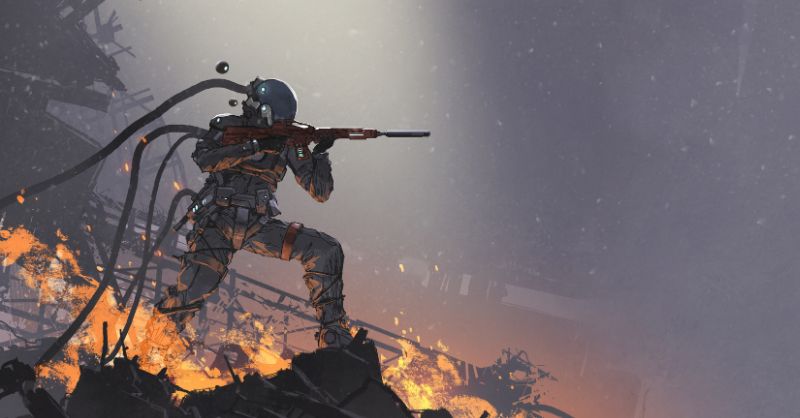Imagine drones making life-or-death decisions in milliseconds, robotic patrols guarding remote borders, and cyberspace defences evolving autonomously to combat unseen threats.
This isn’t a scene from a dystopian sci-fi film – it’s the near future being shaped by Artificial Intelligence (AI) in the defence sector. A global arms race has ignited, fueled by the immense potential and terrifying possibilities of AI-powered weaponry. Let’s explore how this race is unfolding and what it means for the very fabric of warfare and, quite possibly, our everyday lives.
AI on the offensive: A new arms race
The United States and China lead the charge in developing offensive AI weapons. American drones equipped with AI algorithms analyse battlefield data in real-time, optimising targeting and strike decisions. These UAVs such as Predator and Reaper Drones provide real-time data to the command centre, capturing live photos, tracking enemy locations, and assessing terrain. They also have Lethal Autonomous Weapon Systems (LAWS) which utilises AI algorithms to analyse patterns, recognize targets, and autonomously make tactical decisions. Unmanned Aerial Vehicles (UAVs) are equipped with sophisticated autonomous targeting systems for efficient operations.
On the other hand, China pushes the boundaries with autonomous vehicles and unmanned systems capable of independent, coordinated attacks. This offensive thrust raises the spectre of autonomous warfare, where machines, not humans, control the life-or-death calculus on the battlefield. Technology such as the world’s first AI-operated drone carrier named Zhu Hai Yun is equipped with artificial intelligence for autonomous operations. China has a comprehensive approach to military UAVs, utilising them for various purposes. These systems are likely equipped with AI technologies for autonomous functionality and coordinated attacks.
Building defences: AI as the ultimate shield
While the US and China focus on offensive might, Russia and the United Kingdom prioritise defensive applications. Russia employs AI-powered surveillance systems to monitor vast swathes of territory, analysing data to detect and respond to threats proactively. Similarly, the UK utilises AI for cognitive electronic warfare, developing systems that adapt to and neutralise evolving cyberattacks. These defensive applications highlight the potential of AI to shield nations from aggression, but also raise concerns about automated retaliation and the blurring lines of pre-emptive strike.
Beyond superpowers: emerging players join the fray
Israel and India, known for their innovation in military technology, are also joining the AI arms race. Israel leverages AI in cybersecurity, empowering its defences against cyber threats with unprecedented sophistication. India, recognizing the strategic advantage of AI, focuses on integrating the technology for surveillance, reconnaissance, and decision support, aiming to enhance its situational awareness and response capabilities. The entry of these emerging players further intensifies the competition and complicates the geopolitical landscape.
Modern battlefield: AI’s looming shadow on our lives
The ramifications of the AI arms race extend far beyond the battlefield. Increased militarization and enhanced surveillance capabilities, fueled by AI-powered drones and data analysis, pose serious threats to civil liberties and privacy. As offensive AI advances, the risk of cyberattacks on critical infrastructure and personal data escalates, potentially crippling societies and endangering individual lives. Moreover, the economic and social disparities between nations with advanced AI capabilities and those without could widen significantly, exacerbating existing inequalities and fostering instability.
A call for humanity in the machine age
The choice before us is stark: allow the AI arms race to spiral out of control, jeopardising international security and human rights, or channel its immense potential for good. Initiatives like the Campaign to Stop Killer Robots and calls for international regulations on autonomous weapons offer a glimmer of hope for responsible development. Yet, much more needs to be done. Transparency, accountability, and global cooperation are paramount to ensure that AI in defence serves humanity, not threatens it.
We must remember that while the battlefields of the future might be dominated by robots, the ultimate responsibility for their actions lies with the humans who create them. This is not an arms race we can afford to lose. The future of warfare, and the very future of our world, hinges on our collective ability to harness the power of AI responsibly, ensuring that the machines ultimately serve the cause of peace and human well-being.















